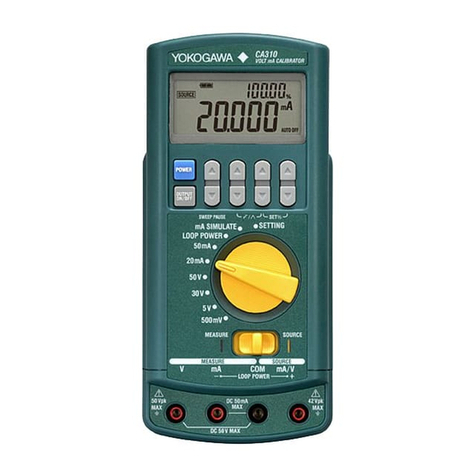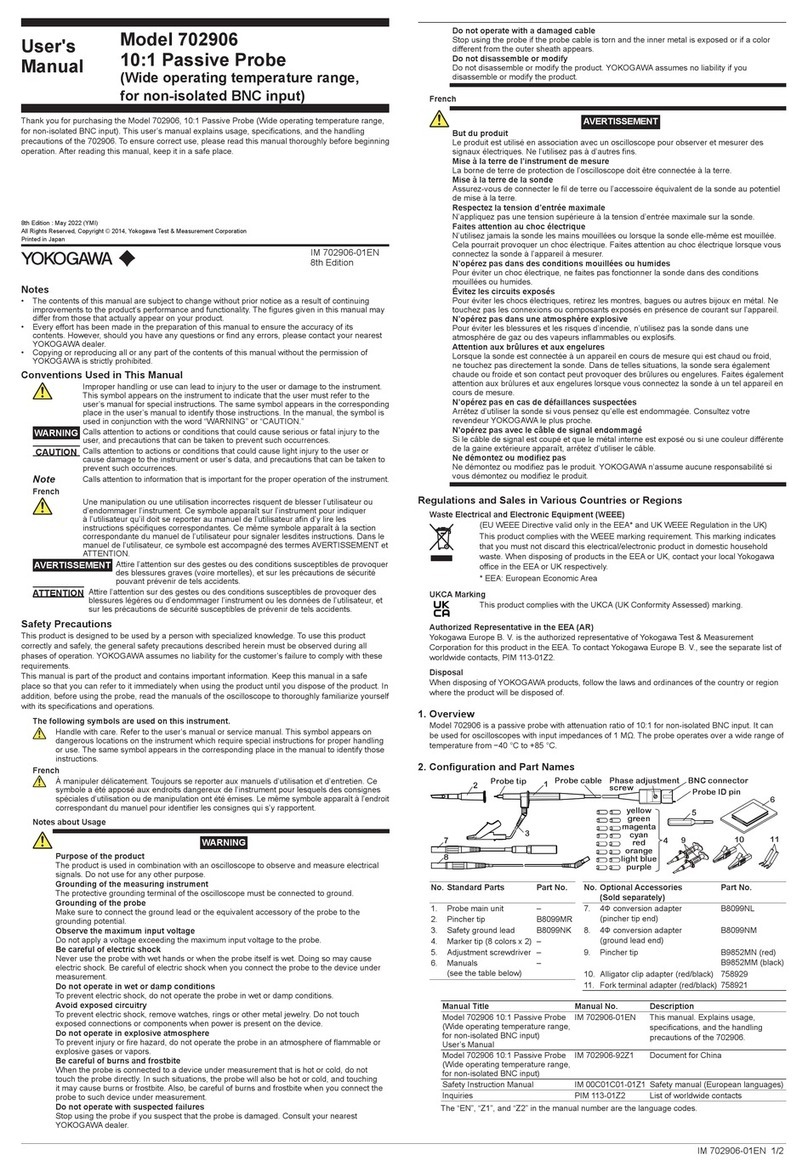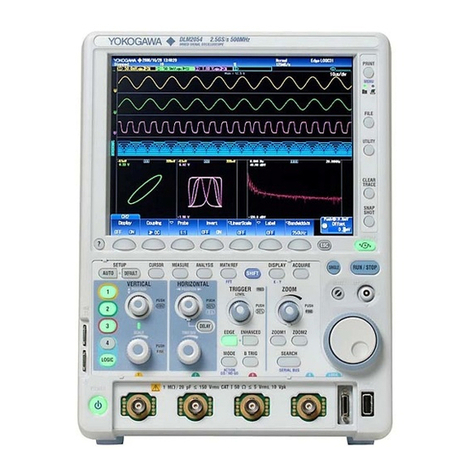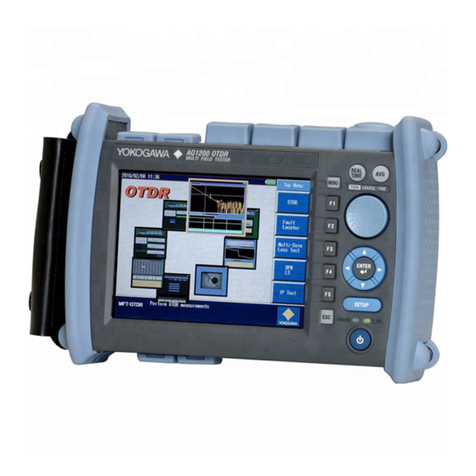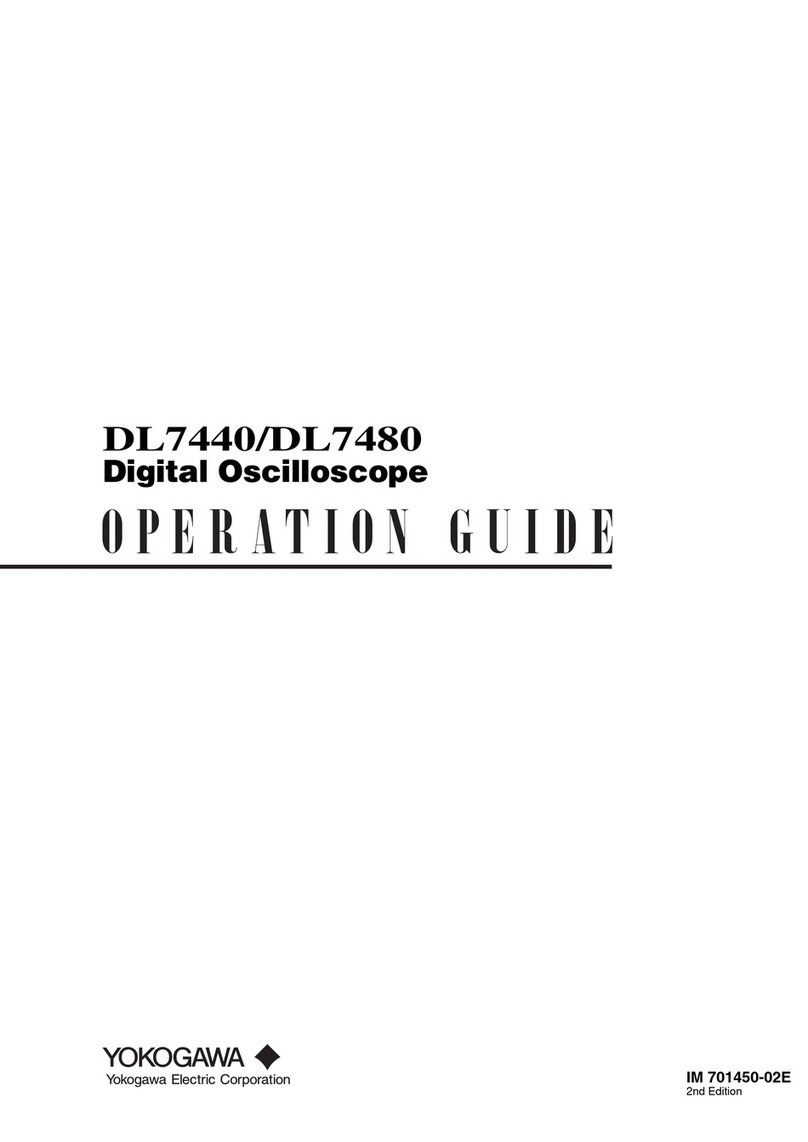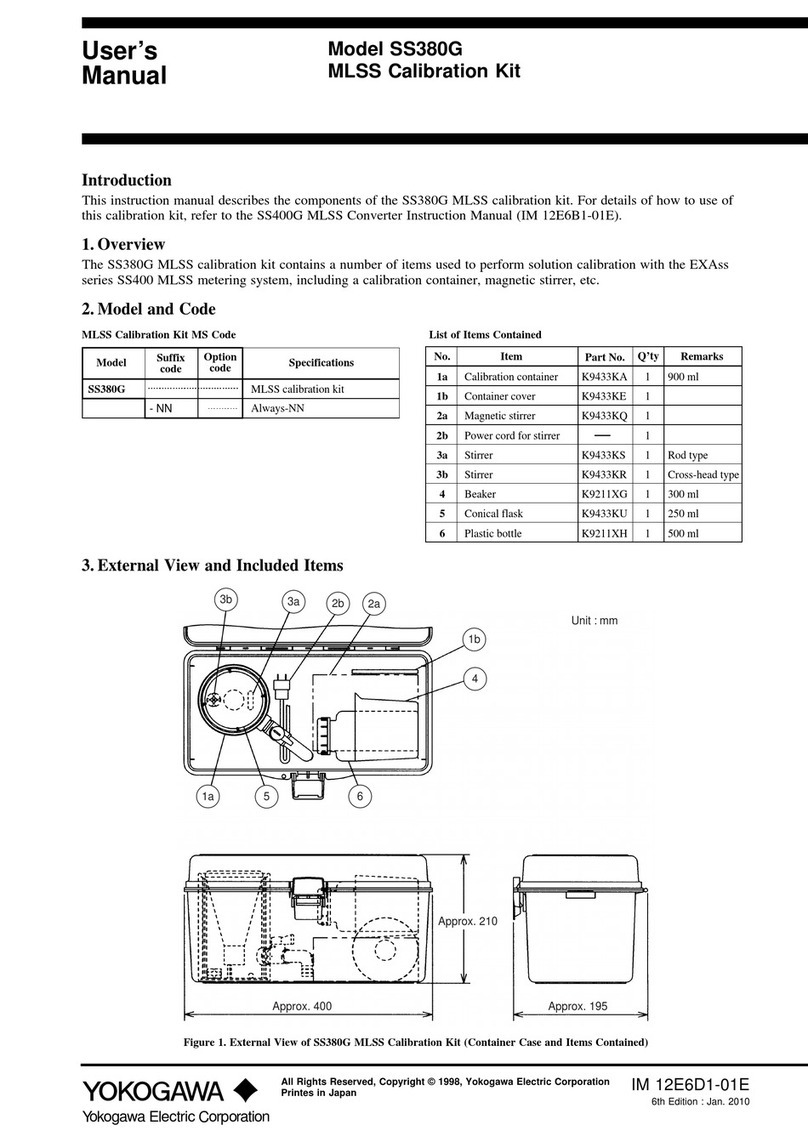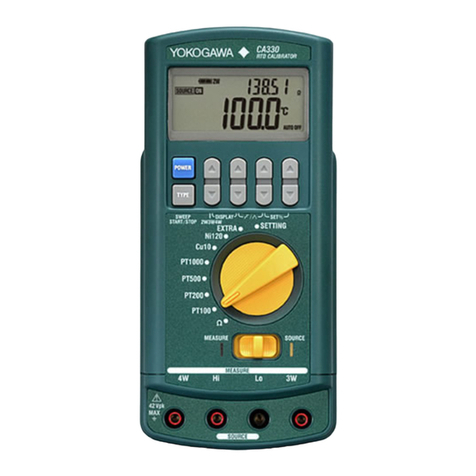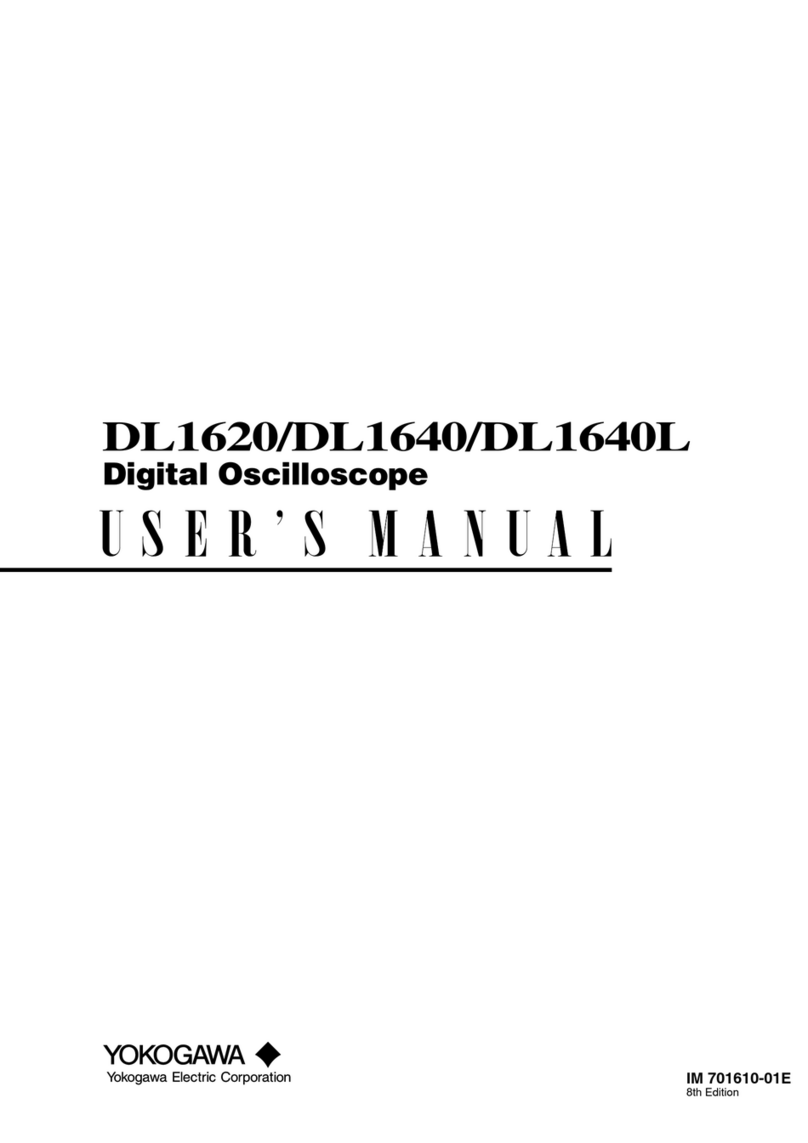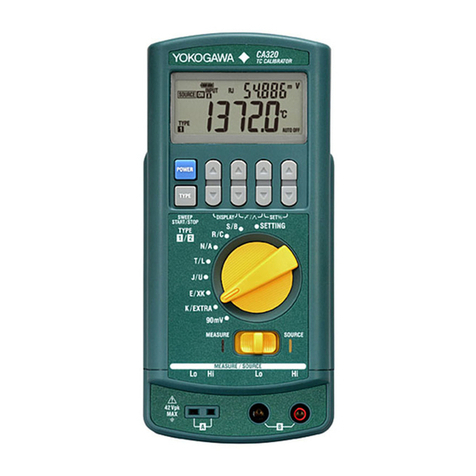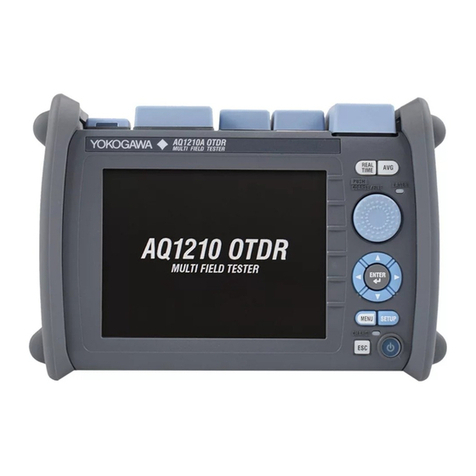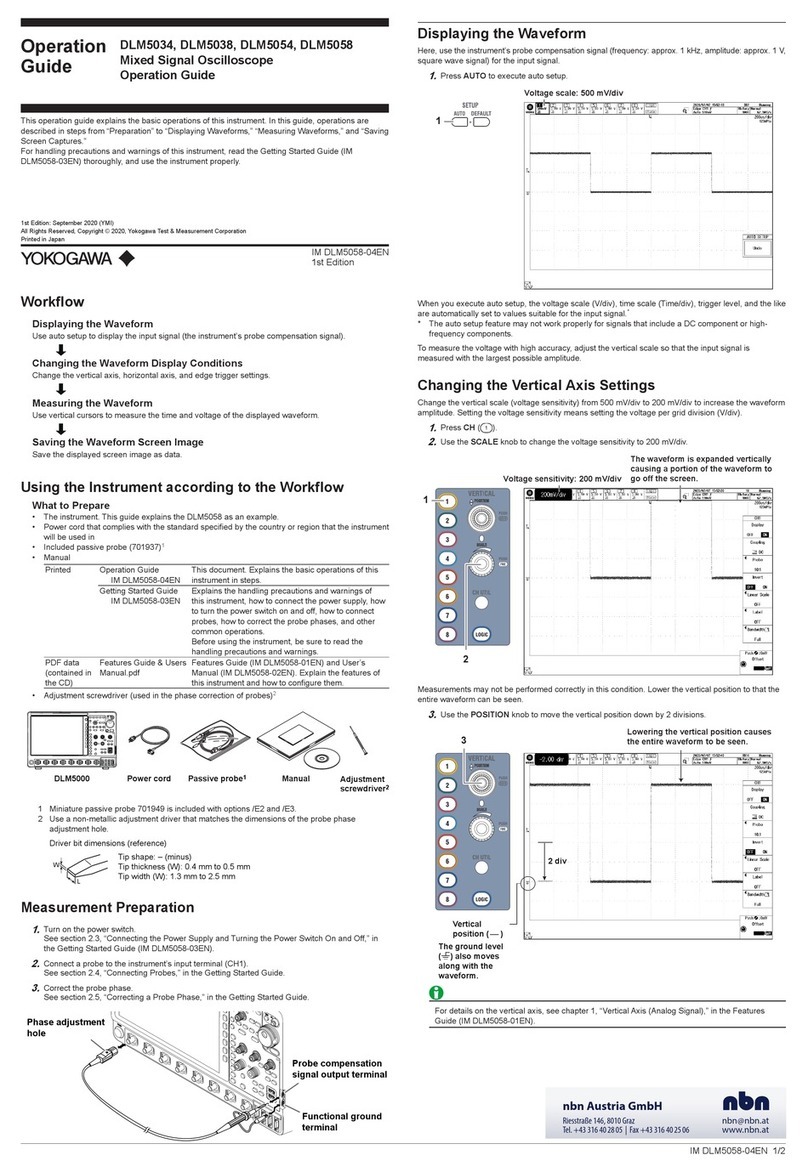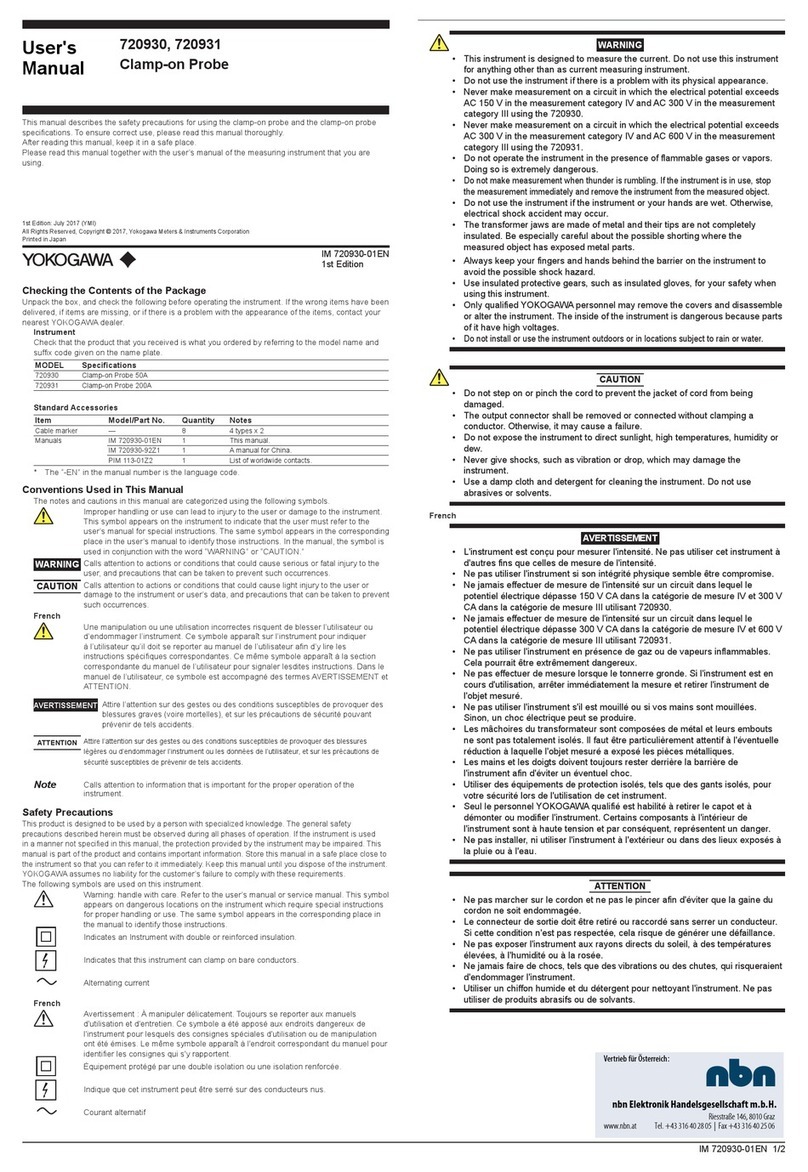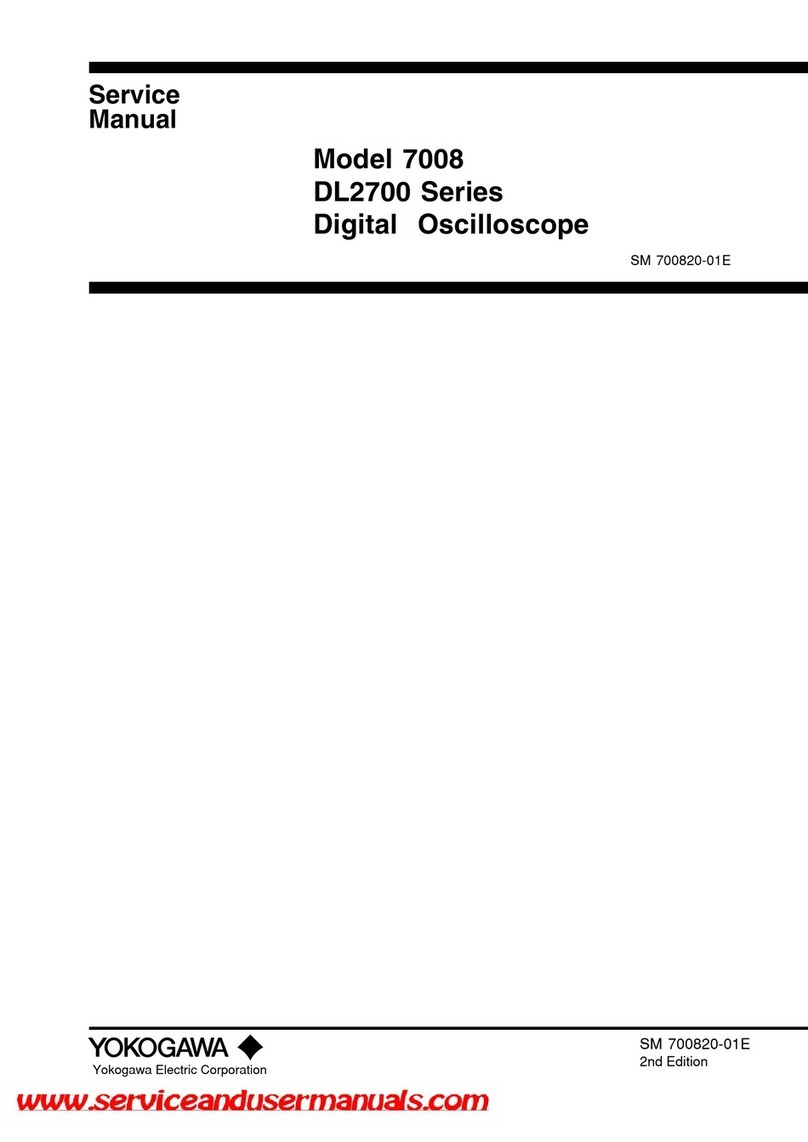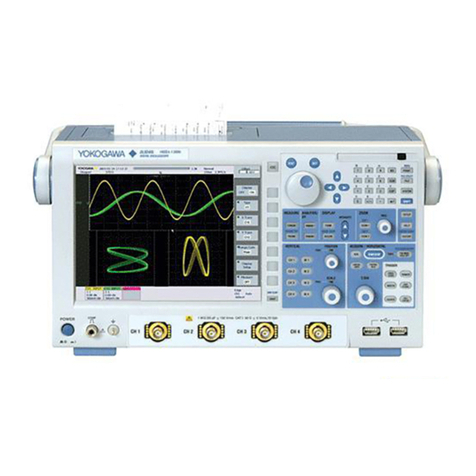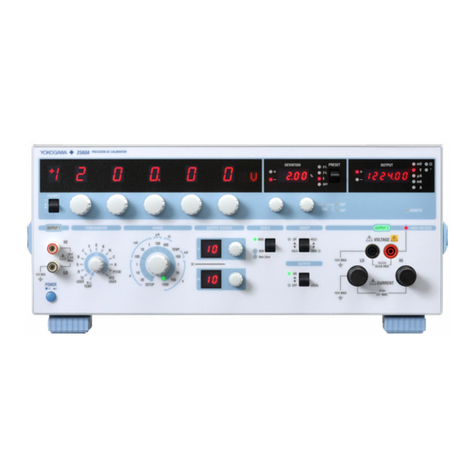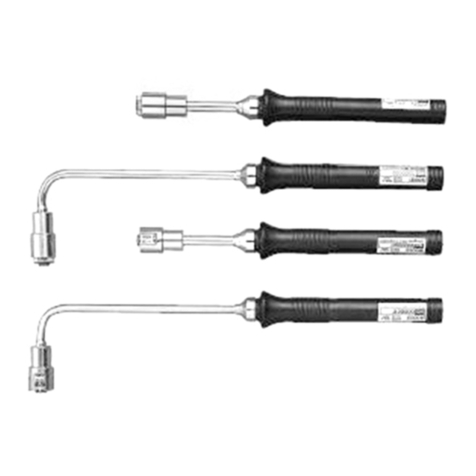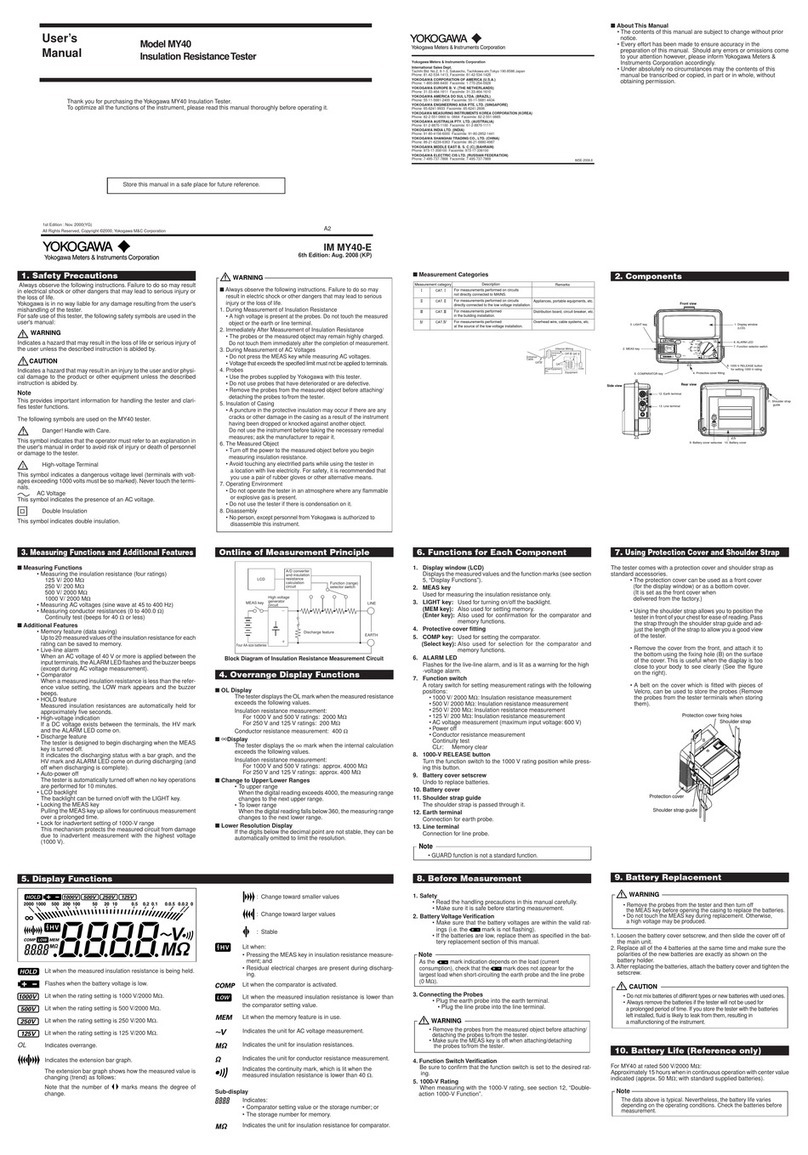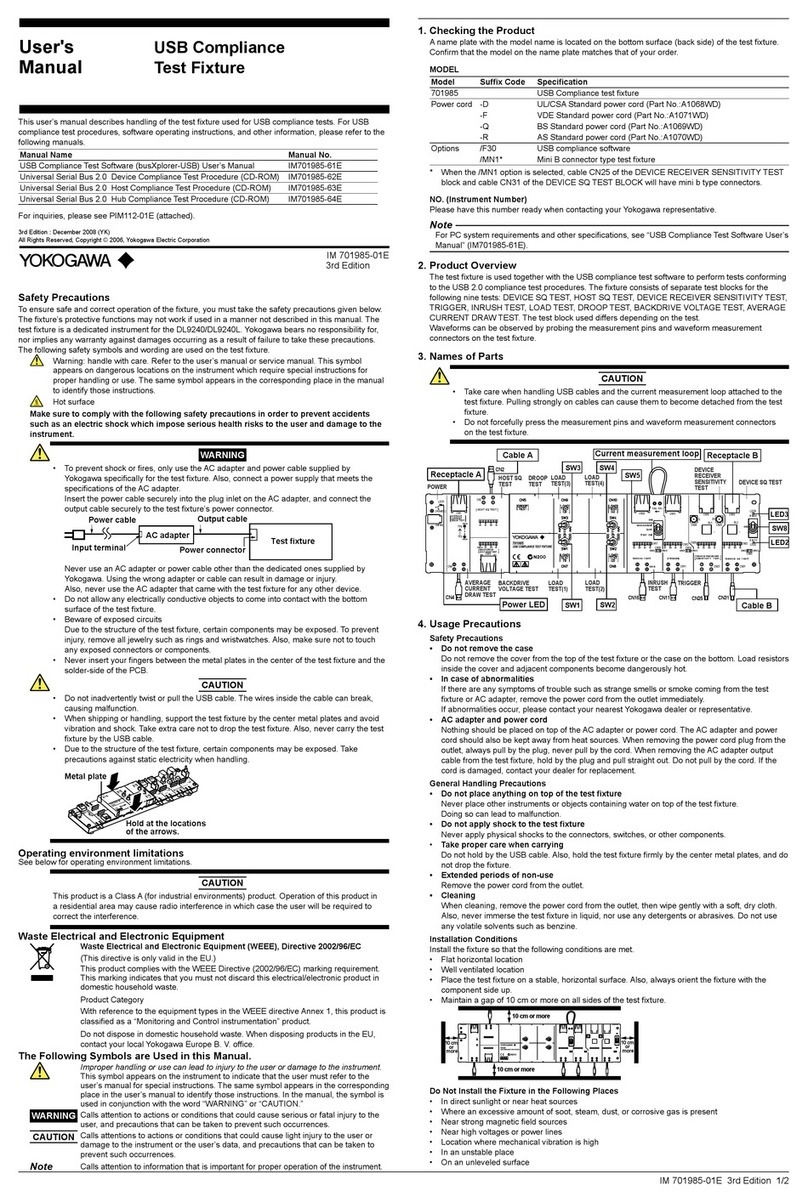
3. Operation
3.1 Precautions
1. The most accurate measurement is attained when Model 3226 is placed
horizontally.
2. After placing Model 3226 at the position of use, check that the meter pointer
coincides with the zero point of the scale, if not, adjust it accurately by
turning the zero adjuster screw.
3. When the approximate value of the leakage current to be measured is
unpredictable, measure by first setting the measuring range selector switch to
the 10 mA position.
4. Before measurement, be sure to check that the measuring range selector switch
is in a position proper for the measurement.
Do not operate the switch while the meter pointer is deflecting
5. When storing of carrying Model 3226 after use, set power on-off/battery
check switch.
3.2 When using Model 322710 Test Box
Before using this instrument, it is necessary to match the polarity with that of
the power plug. Applying 100 V AC to the cabinet of the appliance to be tested
without matching the polarities may cause an electric shock.
● Matching the polarity
Connect the power cord to the power supply.
Turn the power switch to ON and measure the voltage between the earth and
the TEST terminal of this instrument using a Universal leakage voltage tester
(3226 or similar).
If the voltage between the earth and the TEST terminal of this instrument is
• AC30 V or less: the instrument can be used;
• More than AC30 V: use the accessory 3-2 pin adapter and reconnect
the power plug opposite (i.e. turning 180 degrees).
1. Set the power ON–OFF/battery check switch to the “BATT” position and check
the condition of the battery. If the meter pointer is within the battery check-line
range, set the switch to the “ON” position. (If the meter pointer is not within
the battery check-line range, remove the back cover and change the batteries.)
2.
Set the measuring range selector switch to ACV position of Model 3226.
Connect the ground terminal of Model 3226 to the TEST terminal of Model 3227,
then close switch S1
.
3. Connect the “INPUT” terminal (H) of Model 3226 to either of the connector
C1 of Model 3227, and measure the power voltage to check that the voltage is
as rated.
(If the polarity is opposite, the meter pointer will be zero; in this case use switch
S2 to change the polarity.)
4.
Open switch S1, and connect all the simultaneously accessible exposed conductive
surfaces of the to-be-tested appliance together to the “INPUT” terminal (H) of
Model 3226.
5.
Input power plug P2 of the to-be-tested appliance, and turn on all the appliance’s
switches.
6. Leakage current is not necessarily only in the AC spectrum, therefore set
the measuring range selector switch to AC + DC mA range.
7. Close switch S1 of Model 3227, and read the meter of Model 3226.
This reading will tell you the approximate value of the leakage current.
8. Referring to the value obtained in number 7. above, set the range of
the ACmA to the optimum range, and read the meter of Model 3226.
9. Change switch S2 of Model 3227, read the meter of Model 3226, and use
the greater one of the above meter readings as the leakage current value.
10. Set the measuring range selector switch of Model 3226 to the DCmA range,
and read the meter of Model 3226.
11. Repeat the measurement conducted in number 9. above.
12. Start operating the appliance. When the appliance has reached its steady
operating status, measure its leakage current. When not using the Model 3227
Test Box, compose a circuit similar to that shown in Figure 2 and measure.
3226
P1
Power plug
P2
Insulation Table
Appliance to be tested
TEST
S1(POWER)
OFF ON ON ON
S2(POLARITY)
connecter
C1
Ground open
Fig. 2 Connection Diagram
4. Calibration
4.1 Instruments necessary for calibration
Instrument Requirements YOKOGAWA equivalent
Standard DC power supply Output: 10 mA
Accuracy: 0.5 % Model 2552
Standard AC power supply Output: 10 mA
Accuracy: 0.5 %
Model 2558
Model 2558A
4.2 Procedure
1 Set the input resistance to 1 kΩ by using the input resistance switch of
Model 3226.
2 Set the power on-off/battery check switch to the “ON’’ position, and adjust
the meter pointer to the zero point of the scale by using the variable resistor
RV2 inside the case.
3 Set the measuring range selector switch to the DC 1 mA position,
supply 1 mA from the standard PC power supply, and adjust the RV1
variable resistor inside the case so that the meter is showing the full scale.
4 Conduct adjustment in the same manner as above, while the measuring
range selector switch is set to DC 10 mA, AC 1 mA and AC 10 mA positions
in sequence. If indication error is large, test and adjust for the most uniform
and highest accuracy of all the measuring ranges.
5 Repeat the foregoing, with the input resistance set to 1.5 and 2 kΩ in sequence.
5. Specification
5.1 Model 322610
Measuring ranges: DC current: 0.1, 1 and 10 mA
AC current: 0.1, 1 and 10 mA
DC+AC current: 0.1, 1 and 10 mA
AC voltage: 150 and 300 V (50 or 60 Hz)
Accuracy: ±2.5% of F.S. (at each range)
Input resistance: Current measuring range: 1, 1.5 and 2 kΩ
Voltage measuring range: Higher than 100 kΩ
Working frequency
range:
20 Hz to 5 kHz
Overload protection: Withstands 30 mA AC
for 1 minute for each current measuring range.
Effect of temperature: Less than ±0.2%/°C with respect to rated value
(within 20 ±10°C)
Insulation resistance: Higher than 100 MΩ at 1000 V DC
between electric circuit and case.
Withstand voltage: 1500 V AC (50 Hz) for 1 minute
between electric circuit and case.
Power source: Two 9 V dry batteries 6F22.
Usable for approx.: 290 hour.
Dimensions Approx. 190×124×90 mm (excluding carrying handle)
Weight: Approx. 1 kg
Accessories: Measuring lead (B9607GT) 1
Carrying bag (B9646BU) 1
User’s manual 1
5.2 Model 322710
Current capacity: 10 AAC (125 V)
Contact resistance: Lower than 0.005 Ω
Insulation resistance: Higher than 100 MΩ at 500 V DC
between electric circuit and case.
Withstand voltage: 1000 V AC for 1 minute
between electric circuit and case.
Dimensions Approx. 70×155×65 mm
Weight: Approx. 0.6 kg
Accessories: 3 to 2 pin adapter
Model 3227 Test Box
6. Maintenance
For accurate measurement at all times, Model 3226 must be kept in the best
condition.
For this purpose, avoid using Model 3226 at a place subject to:
(1) Severe vibration (2) Fill of dust or corrosive gas
(3) Direct sunlight (4) Much moisture
(5) Large variation of ambient temperature (6) Strong external magnetic field
• Both surfaces of the meter cover are coated with anti-static agent.
Do not wipe them hard or clean them with wet cloth,
because such may deteriorate the anti-static effect.
(Use dry, soft cloth, and wipe them lightly with it.)
• The case and meter cover are made of thermoplastic material.
Be careful not to touch them with a soldering iron or other hot object.
Do not clean them with a large quantity of lacquer thinner, benzine or alcohol.
IM 3226-E <P2>
